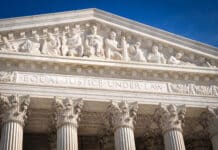One of Minnesota’s leading health officials may have contradicted himself in giving different messages on school mask mandates to parents and staff.
Nick Kelley, the public health administrator of Bloomington, Minnesota, advises three school districts — Edina, Bloomington, and Richfield — on COVID-19 “health and safety protocols.” According to a whistleblower who spoke to the Center of the American Experiment, Kelley had previously urged students and staff to wear masks, calling it one of the most important measures to mitigate transmission.
Kelley’s universal masking recommendation came during a “Return to School” webinar hosted on Aug. 2 by Edina Public Schools.
“They’re called best practices because this is the evidence-based data we have,” he said. “Masking is at the top of that list. The ability to have source control and some aspect of protection for the wearer is a phenomenal tool to control a respiratory pathogen like COVID.”
But just a month later, behind closed doors with school staff, Kelley revealed himself to be doubtful about the actual effectiveness of masks, according to the American Experiment report.
“In terms of purely broad effectiveness, the least effective mitigation we’re implementing in this process is masking,” Kelley said during a Sept. 2 meeting. “Masking, the quality of the consistency of the fit, all those things are highly variable in a population setting.”
The whistleblower relayed a recording of the meeting to American Experiment.
“[Masks are] incredibly effective in a health care setting when you’re wearing certain kinds of issued gear and things of that nature,” Kelley added. “But at an elementary school level, I know from dropping my kids off, I see kids wearing dirty old masks, cloth masks that look like they don’t fit and they have a half-inch gap under their chin to high-quality masks to the equivalent to respirators, Kn94s and Kn95s. So there’s a wide gamut.”
The Bloomington health official participated in a community forum hosted by Edina Public Schools on Dec. 6. He stressed the importance of vaccination but reiterated that masks remain a crucial tool in slowing the spread. He also said masks should continue to be worn for the foreseeable future.
“When we have case rates in the 100 per 100,000 and our hospitals are overwhelmed, that is not the time to make a change. I like to see stability and soundness and data,” he said. “So wait a couple of weeks. If we’re on a continuous trend for several weeks, things are stable, things aren’t changing, then start having those conversations. But if you take things down, you’ve got to have a process to take it back up.”

















